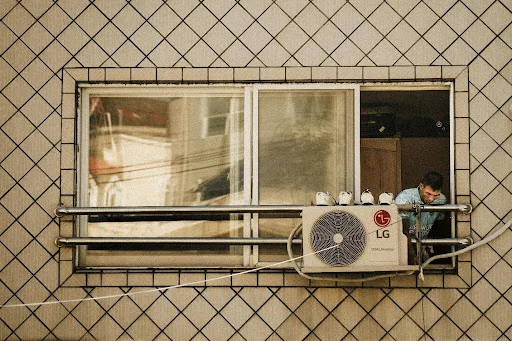
Home Comfort Mistakes You Might Be Making Without Realizing It
We all want our homes to feel comfortable. Whether it’s escaping the summer heat, staying warm through winter, or just enjoying a cozy space after a long day, home comfort plays a huge role in our everyday well-being. But sometimes, even with the best intentions, you could be doing things that are making your home less comfortable without even knowing it.
These comfort issues aren’t always obvious. You might think the uneven temperature in your bedroom is just part of how the house is built or that those dry winter mornings are normal. But often, the real problem lies in simple oversights or neglected maintenance. In places like Wenatchee and Leavenworth, Washington, where temperatures can swing between hot summers and chilly winters, staying ahead of heating and cooling issues is essential.
Local HVAC professionals understand how the regional climate affects your system year-round, and they’re often the first to point out that most problems start with small warning signs that homeowners tend to ignore.
Table of Contents
1. Ignoring HVAC Health
Your heating and cooling system is the heart of your home’s comfort. It quietly works behind the scenes to keep your space at the right temperature. But because it’s mostly out of sight, it’s easy to forget that it needs attention too.
One of the biggest mistakes homeowners make is assuming that if the system is running, it must be working fine. In reality, you might be dealing with issues like clogged filters, dirty coils, or poor airflow, all of which reduce efficiency and make your home feel less comfortable.
That’s especially true during peak seasons. If you’ve ever felt like your home just isn’t cooling down fast enough in the middle of a Wenatchee summer, it could be more than just the weather. When systems struggle to maintain temperature, it usually means they’re working harder than they should, driving up your energy bill and shortening the life of your unit.
That’s why regular maintenance is so important. Even something as simple as changing filters or checking the thermostat settings can make a big difference. When things go wrong, timely air conditioning repair can restore comfort quickly and prevent bigger issues down the road. Professional repair services not only fix immediate problems but also inspect for underlying damage, help improve efficiency, and ensure your system is ready for extreme weather when it hits.
2. Overlooking Drafts and Insulation Gaps
You might be surprised how much outside air sneaks into your home through small cracks and gaps. Drafts from windows, doors, and poorly insulated attic spaces are common culprits. These tiny air leaks can make certain rooms feel chilly in the winter or too warm in the summer, even when your HVAC is doing its job.
The problem is that most of these gaps aren’t obvious. You might notice that one room is always colder than the others or that your energy bill has climbed higher than usual. These are signs that your home might be losing energy and comfort without you realizing it.
Simple fixes like weather stripping around doors, caulking window edges, or adding insulation to attic access points can make a big difference.
3. Setting Thermostats Incorrectly
Many homes now have programmable or smart thermostats, but that doesn’t mean they’re always set up correctly. It’s common for people to override schedules manually or forget to update settings as the seasons change. It leads to systems running inefficiently, heating or cooling when no one’s home or missing the times when you actually need temperature adjustments the most.
If your home feels too cold in the morning or too warm at bedtime, your thermostat schedule might be off. The good news is that adjusting it is easy. Spend a few minutes customizing your daily settings, and your home will feel more comfortable throughout the day.
4. Blocking Air Vents with Furniture or Curtains
When you’re arranging your furniture or hanging new curtains, you might unknowingly block an air vent or return. That limits airflow, which makes your HVAC system work harder and leads to uneven temperatures throughout your home.
Maybe the couch covers a floor vent in the living room, or a bookshelf sits in front of a wall vent in your office. These little things can reduce efficiency and create hot or cold spots that throw off your comfort.
Take a quick walk through each room and check for blocked vents. Rearranging furniture or using vent deflectors can help guide airflow back into the room, making your system more effective.
5. Poor Humidity Control
Humidity might not be at the top of your mind when you think about comfort, but it plays a big role in how your home feels. Air that’s too dry can cause dry skin, sore throats, and static electricity. On the flip side, air that’s too humid feels sticky and can lead to mold or mildew.
Many people assume the HVAC system handles humidity automatically, but that’s not always true, especially in older systems. You might need a separate humidifier in the winter or a dehumidifier during muggy months.
Pay attention to signs like condensation on windows, musty smells, or cracking wooden furniture. These are clues that your humidity levels are off. Investing in a simple hygrometer can help you monitor moisture in the air and make adjustments when needed.
6. Neglecting Air Quality and Ventilation
Even if your home looks spotless, the air could be filled with dust, allergens, or pet dander. Without proper ventilation, these particles stick around and make the air feel stale or heavy.
Poor air quality doesn’t just affect comfort. It can also impact your health, especially if you have allergies or asthma. Common mistakes include rarely opening windows, skipping filter changes, or ignoring bathroom and kitchen exhaust fans.
To improve air quality, open windows occasionally to let fresh air in, especially during mild weather. Change your HVAC filters regularly, and consider using an air purifier in high-traffic areas. Even a few houseplants can help absorb indoor pollutants and keep your air feeling fresher.
7. Lighting and Comfort Connection
Lighting affects more than just how a room looks—it influences how it feels. Harsh overhead lights can make a space feel cold or uninviting, while poor lighting makes it hard to relax or focus. A common mistake is relying only on ceiling lights without adding softer, warmer layers of light. Floor lamps, table lamps, and under-cabinet lighting can make a space feel more welcoming and flexible.
Also, consider the color temperature of your bulbs. Cooler, white-toned light is great for task lighting, but warmer tones work better in living rooms and bedrooms where relaxation is the goal. Comfort at home doesn’t have to be complicated. Most of the mistakes we’ve covered are small and easy to fix, but they can make a big impact on how your space feels every day.
Start by taking a closer look at your HVAC system, your thermostat settings, and how air flows through your home. Check for drafts, adjust lighting, and pay attention to air quality. With just a few simple changes, you’ll notice your home becomes more balanced, efficient, and truly comfortable.





